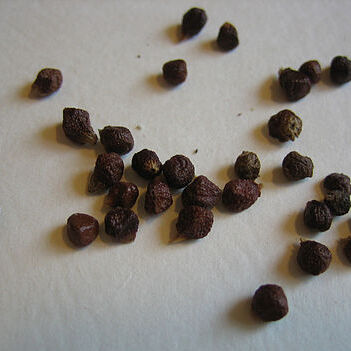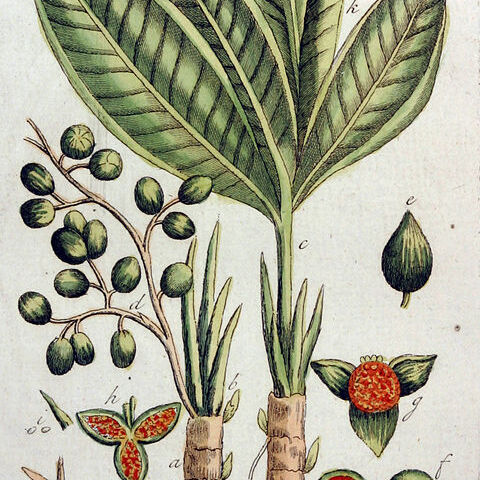Rhizomes 2-3 mm. in diameter, relatively short so that the leafy shoots form loose clumps; scales chartaceous, brown, 3-4 cm. long.. Leafy shoots 1-1.5 m. tall.. Leaves narrowly elliptic, 15-25 × 1.5-3 cm., caudate-acuminate, base cuneate, quite glabrous; nerves closely spaced, 29-35 per 5 mm. below, ± 23-28 per 5 mm. above but sometimes partly obscured by hypodermal sclerenchyma; ligule rounded, coriaceous, 1-2 mm. long; leaf-sheaths sulcate, glabrous.. Inflorescences from the base of the leafy shoot, 1-flowered; peduncle 2-4 cm. long, erect; bracts ovate, chartaceous, glabrous, up to 3.5 × 2.5 cm.. Calyx spathaceous, glabrous, ± 4.5 cm. long.. Petals pale mauve, the posterior elliptic, concave, ± 5 × 3 cm., the laterals narrowly triangular, ± 4.5 × 0.5 cm.. Labellum ± 10 cm. long, the free portion broadly obovate, ± 6 × 5 cm., pale mauve with a yellow patch at the base.. Free filament ± 2 cm. long; anther subterminal, 10-12 mm. long, the basal 6-7 mm. dehiscent; apex 3-lobed, the terminal lobe expanded, rounded, to ± 8 × 7 mm., the lateral lobes narrowly triangular, ± 4 mm. long.. Ovary glabrous; style filiform, glabrous; stigma trumpet-shaped with ciliate margins.. Fruit ovoid, to 12.5 × 5.0 cm. including a tubular beak ± 5.5 cm. long formed from the persistent accrescent calyx, smooth, red when ripe.. Seeds irregularly obovoid, 4 ×3 mm., red-brown, tuberculate.
More
A ginger family herb. It keeps growing from year to year. It has underground stems or rhizomes. These are 2-3 mm thick and short. The leaves are broadly sword shaped. They are 35 cm long and 15 cm wide. The leaves reach 0.8-2 m high. The flowers are on 5 cm stems that emerge just above ground level. They are purple and trumpet shaped. The fruit are pear shaped and 10 cm long. They are red to orange and contain many seeds. The seeds are light grey and dull. They are almost round with irregular flat spots.
Inflorescences at the base of the leafy stems, 1-flowered, very short
Tufted with leafy stems up to 3 ft. high
The seeds have a flavour like mild cardamom. They are hot and peppery. They are used to flavour wines, beer, cordials, liqueurs, meats and breads. The fruit pulp around the seeds are eaten or chewed as a stimulant. The leaves are used for tea.


